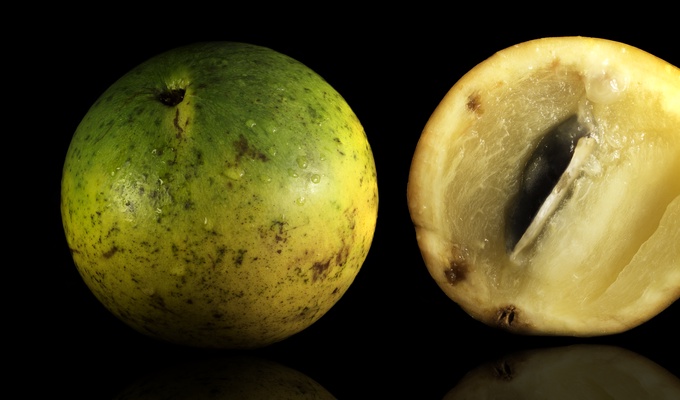Not to be confused with star apple or canito, see Chrysophyllum cainito.
The abiu (Pouteria caimito) is a tropical fruit tree originating in the Amazonian region of South America, which is now also cultiated in the Philippines and Southeast Asia. It produces ovoid fruits, with a white, translucent interior, which has a creamy and jelly-like texture with a taste resembling caramel custard.
The fruit of the abiu tree considered one of the best of the sapotes due to having the sweet, caramel-like taste of sapodilla with a smoother texture. It is commonly eaten out of hand, although in Colombia, those eating the fruit this way are advised to grease their lips to keep the gummy latex from sticking; this hazard can be avoided by selecting fully ripe fruits and scooping out the flesh with a utensil. The tartness of a bit of added lime juice may enhance the flavor, especially when chilled. The melting, sweet pulp of the abiu is also used to flavor ice cream and cut into yogurt for a light and delicious breakfast. The subtlety of the flavor limits its use in more complex confections and salads.
The fruit is known by different regional names in countries of production; in Brazil, it is known as abiu, in Trinidad it is the yellow star apple or caimitt, (distinct from the star apple); Colombians know it as the caimo, or caimito amarillo (again not to be confused with Chrysophyllum cainito, which is known as caimito in some countries) or madura verde; in Ecuador it is known as the luma or cauje; in Venezuela as temare; in Portugal as abieiro; in Bolivia is known as kepi; and in Ghana as alasa.
